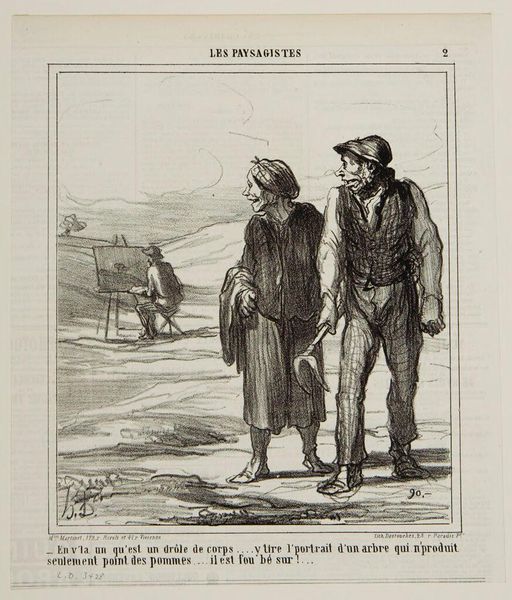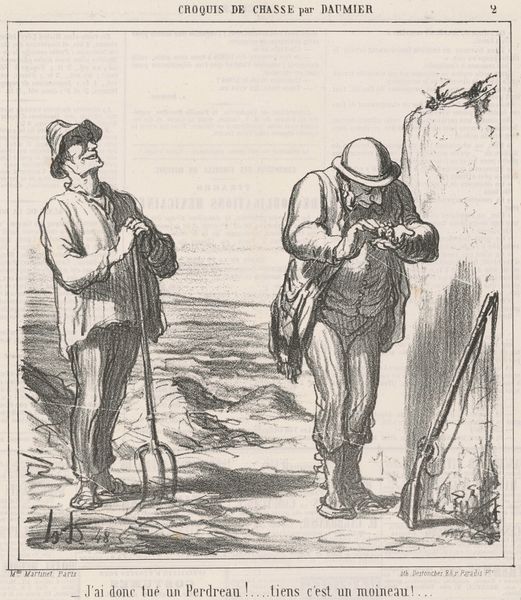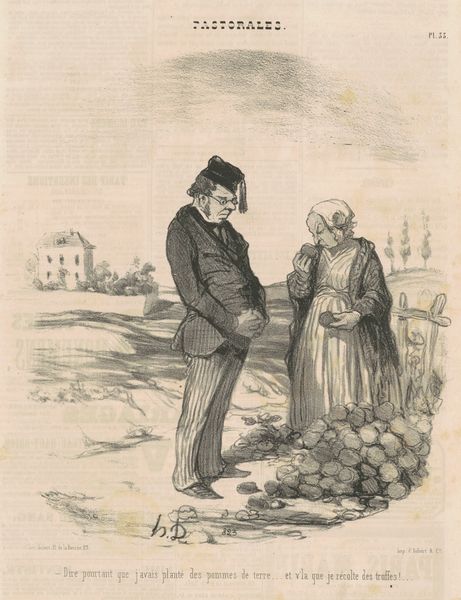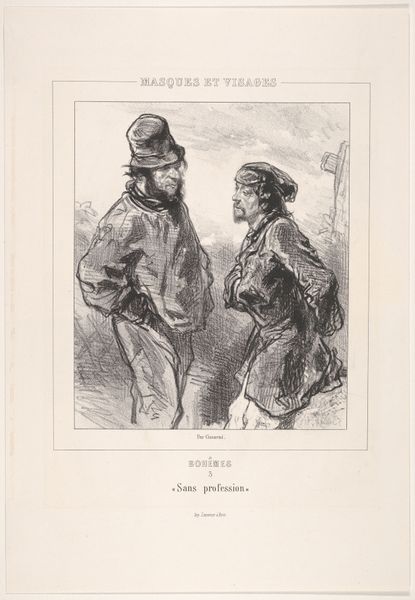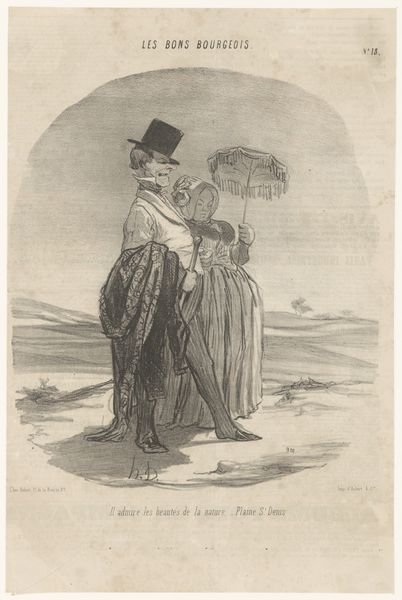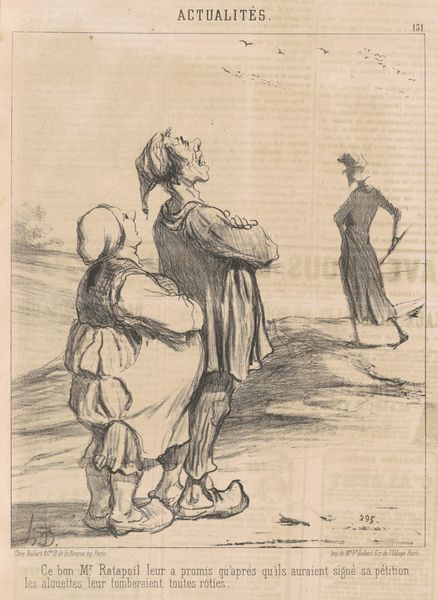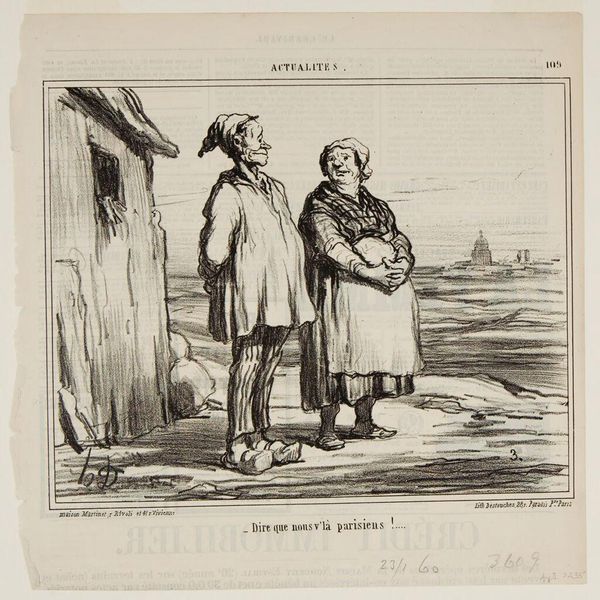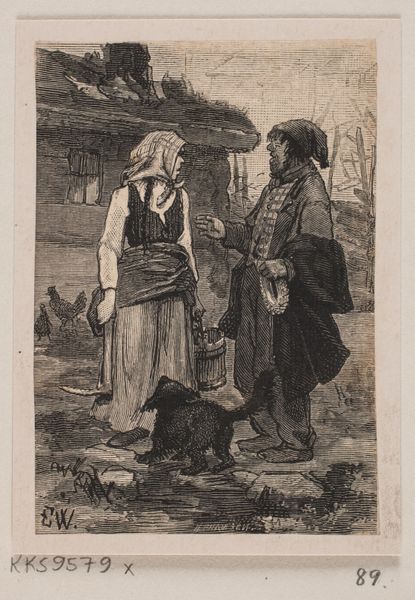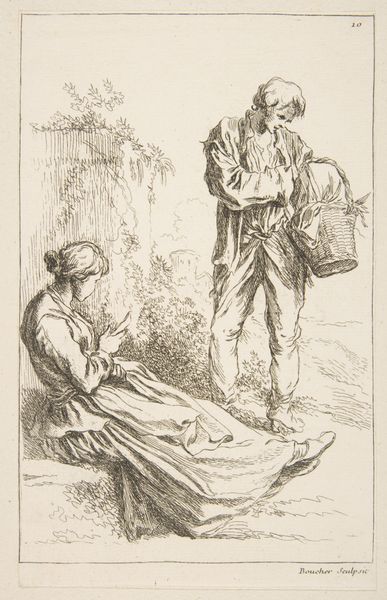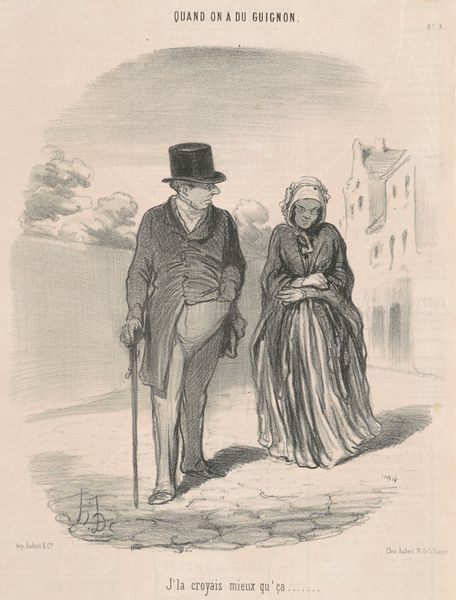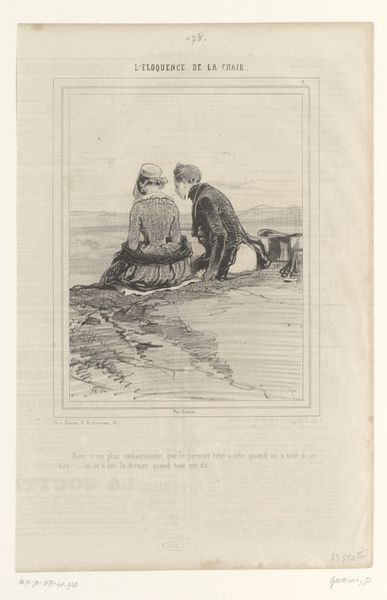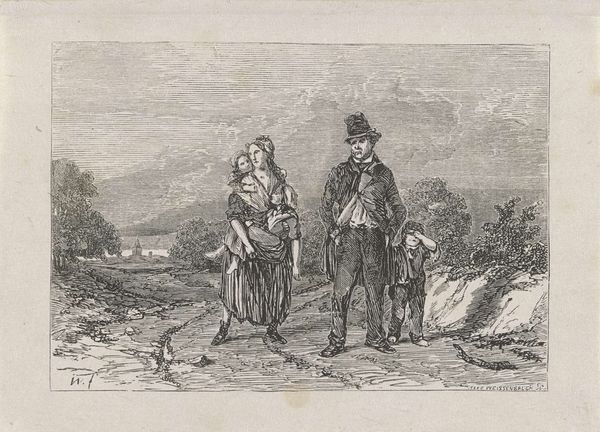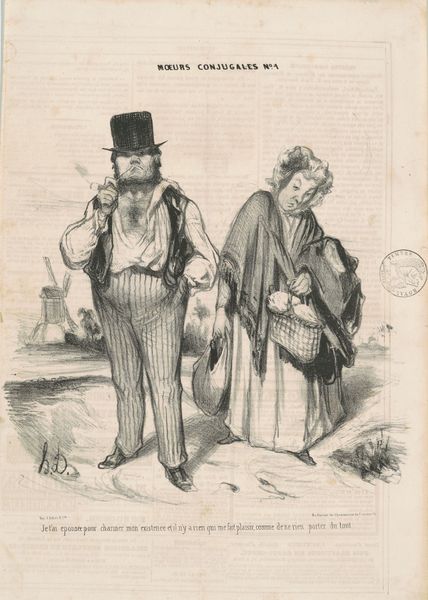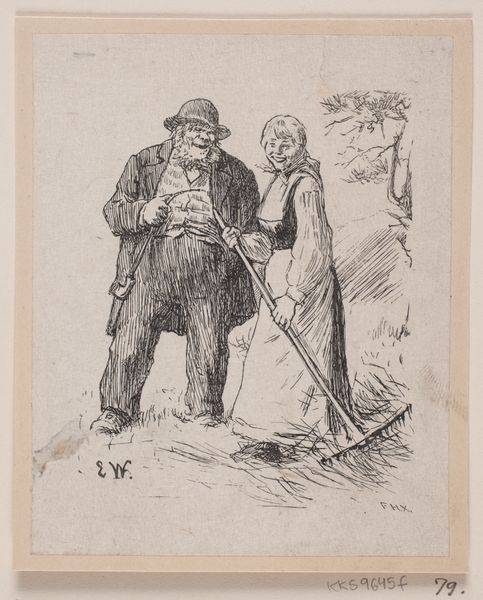
Copyright: National Gallery of Art: CC0 1.0
Curator: Today, we're examining a lithograph from around the 19th century by Honoré Daumier, titled "En v'la un qu'est un drôle de corps . . ." The piece presents a caricature of a landscape painter, as observed by two figures in the foreground. What are your initial thoughts? Editor: It strikes me immediately as a work deeply embedded in social observation. The rough lines and the seemingly quickly rendered details feel very connected to a specific moment and the everyday materials of printmaking available at that time. Curator: Absolutely. The composition itself is rather ingenious. The artist has clearly captured an attitude, a specific socio-economic class scrutinizing the bourgeois landscape painter. Daumier masterfully employs contrasting lines—the crude rendering of the two figures set against the more delicate strokes suggesting the landscape painter at work. The landscape is just the material representation. Editor: The medium, lithography, also informs the message. This isn't some grand oil painting meant for a salon. It's a print, intended for wider distribution, engaging with contemporary discussions and likely sparking dialogue among the working class who would recognize the class commentary. The accessibility of the printed image invites more eyes, not fewer. Curator: Precisely! Daumier used the means of production to comment on it. He also cleverly uses a subtle satire by mocking a profession—landscape painting— which then was considered one of the fine arts. The caricature-esque figures provide visual relief while the inscription adds another dimension of interpretive engagement for those that are not represented. Editor: This work really foregrounds the idea that the value of art lies in its use. In its original moment it probably incited discussion about what kind of labour counts, whose activities are memorialized as 'art,' and what is simply manual labour. Curator: Looking at the larger meaning that is encoded in Daumier’s work, it offers a fascinating reflection of the evolving status of art. Editor: Yes, by understanding the conditions and mode of production of the artwork itself, the critique is even sharper. It asks the viewer to think not just about what is represented, but also who has the privilege to represent it. Curator: This piece provides insight into art’s intricate connection to labour. Thank you for helping bring light to some other angles of thinking around the visual.
Comments
No comments
Be the first to comment and join the conversation on the ultimate creative platform.
